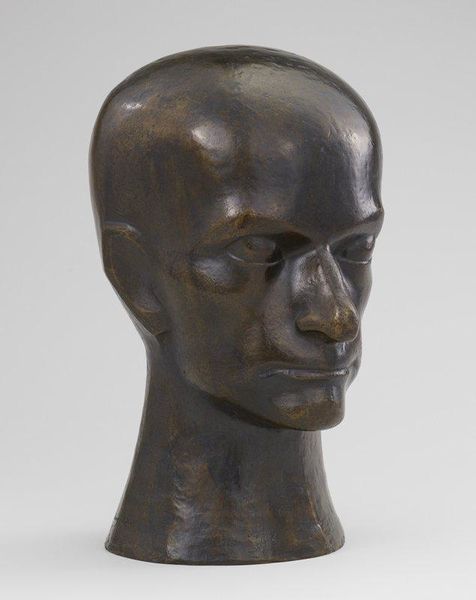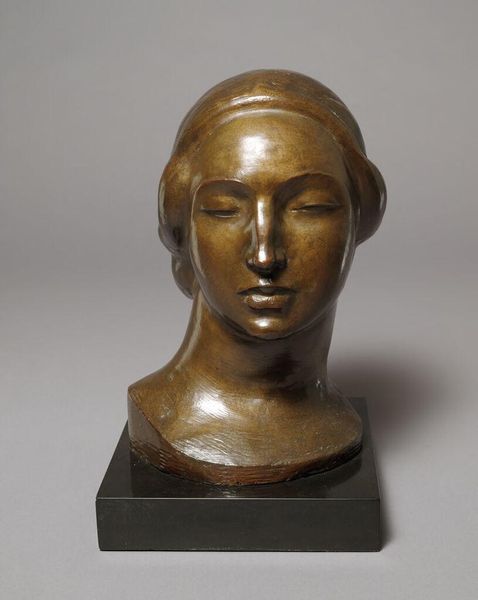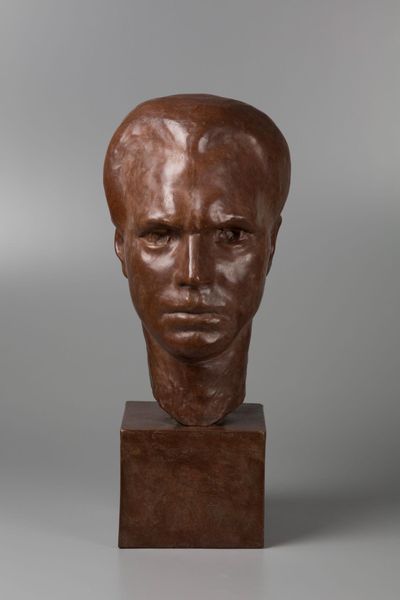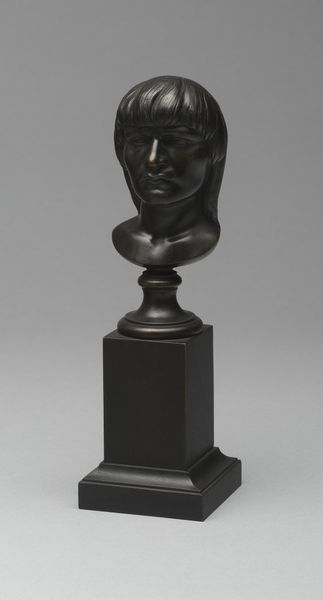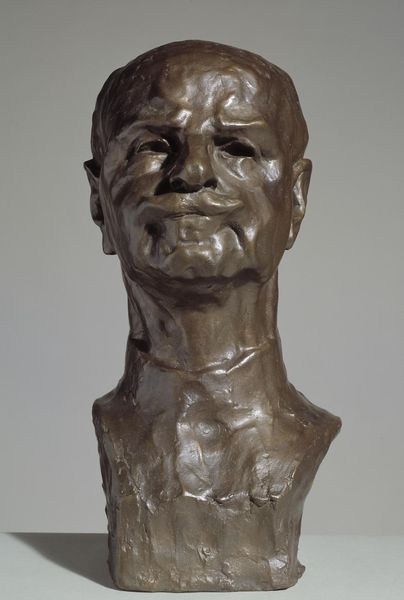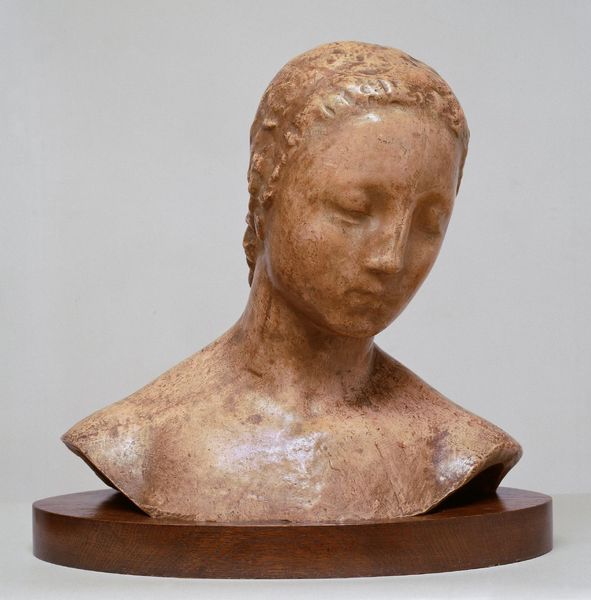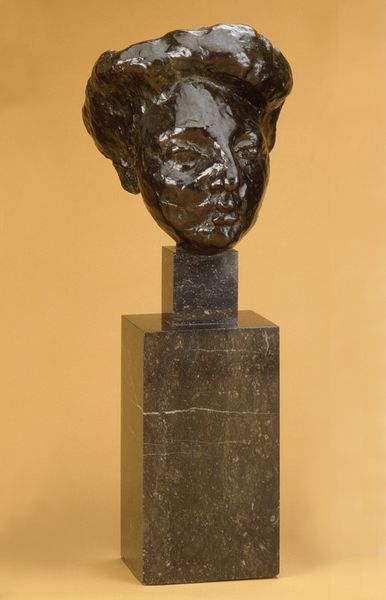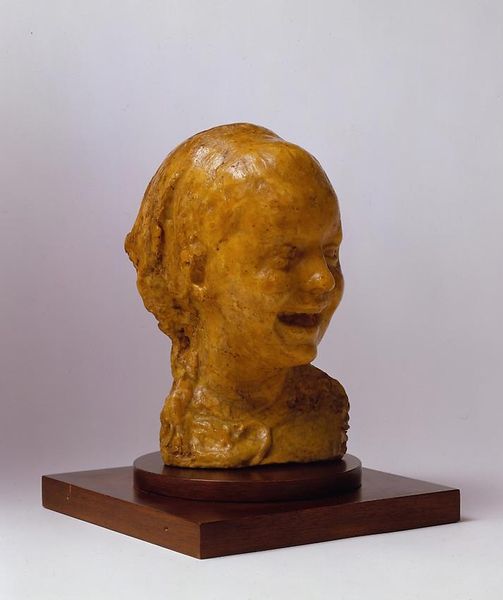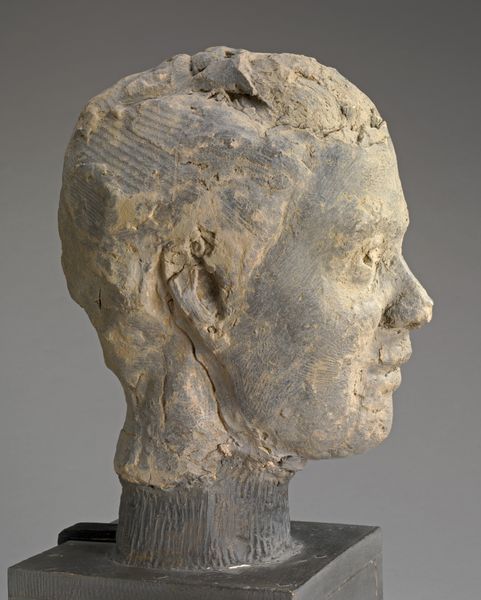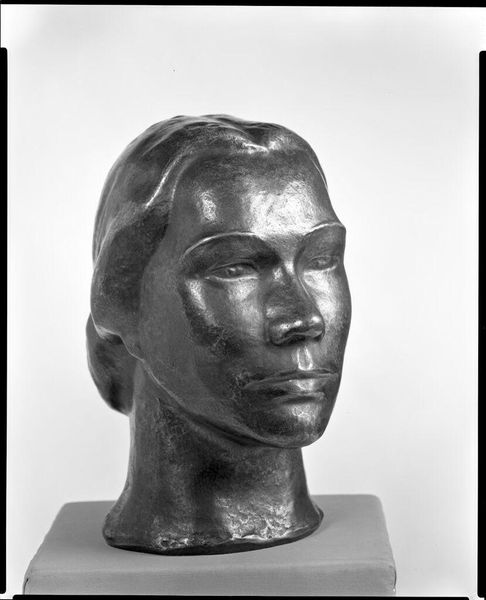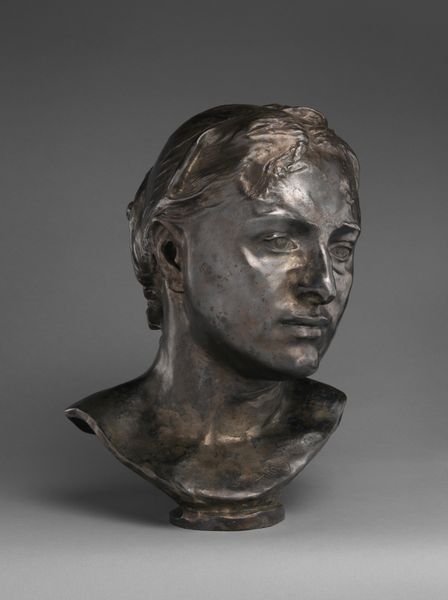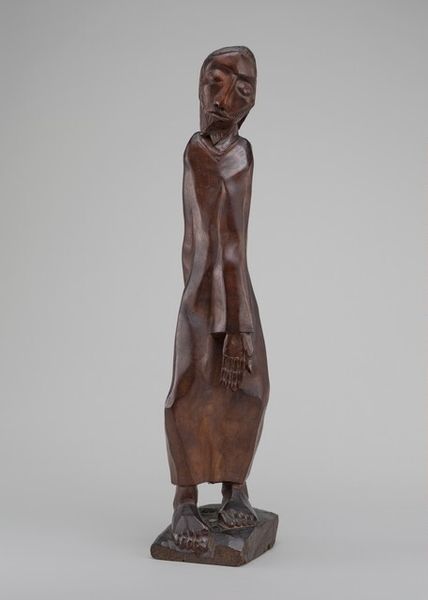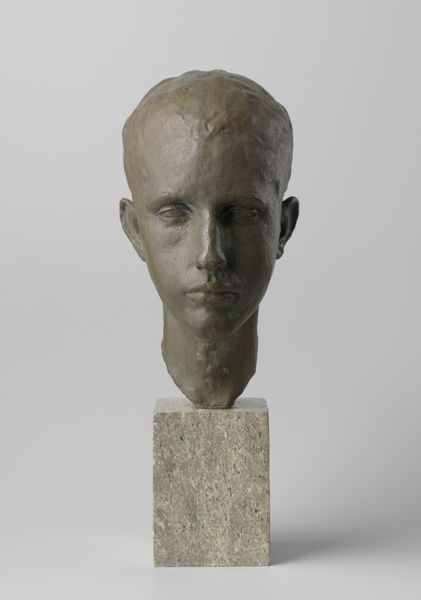
sculpture
#
3d sculpting
#
head
#
charcoal drawing
#
sculptural image
#
portrait reference
#
portrait head and shoulder
#
sculpting
#
sculpture
#
mid-section and head portrait
#
animal drawing portrait
#
charcoal
#
graphite
Dimensions: overall without base: 24.1 × 14 × 12.7 cm (9 1/2 × 5 1/2 × 5 in.) overall with base: 26 × 14.3 × 12.7 cm (10 1/4 × 5 5/8 × 5 in.)
Copyright: National Gallery of Art: CC0 1.0
Editor: Here we have Richmond Barthé's "Head of a Boy," created around 1930. It's a striking bronze sculpture, incredibly smooth. What’s most interesting to me is the figure's closed eyes – it feels very introspective. What do you see in this piece, particularly within the context of the era it was created? Curator: Beyond the skillful sculpting, I see a work deeply embedded in the cultural and socio-political currents of the Harlem Renaissance. Barthé, a Black artist, was consciously creating images that countered racist caricatures prevalent at the time. The closed eyes you mention evoke a sense of interiority and dignity, rejecting the external gaze. Editor: So, it’s about reclaiming representation and challenging existing stereotypes through art? Curator: Precisely. Barthé, alongside other artists of the Harlem Renaissance, sought to depict Black individuals with complexity and nuance. The sculpture's form also echoes classical sculpture, thereby staking a claim for Black figures within the established art historical canon. The choice of bronze further elevates the subject matter, imbuing it with permanence and worth. Does this change how you initially viewed the work? Editor: It really does. I initially saw just a beautiful, quiet sculpture. But now I understand how politically charged it could be to create a work like this, centering Black humanity in such a direct way. Curator: Think about the power of art to participate in dialogues about identity and equality. Editor: This has totally reshaped my understanding. Thank you for offering new insights into how the Harlem Renaissance impacted art, politics, and society. Curator: My pleasure. Recognizing the social history inherent within the art truly transforms the viewing experience.
Comments
No comments
Be the first to comment and join the conversation on the ultimate creative platform.

